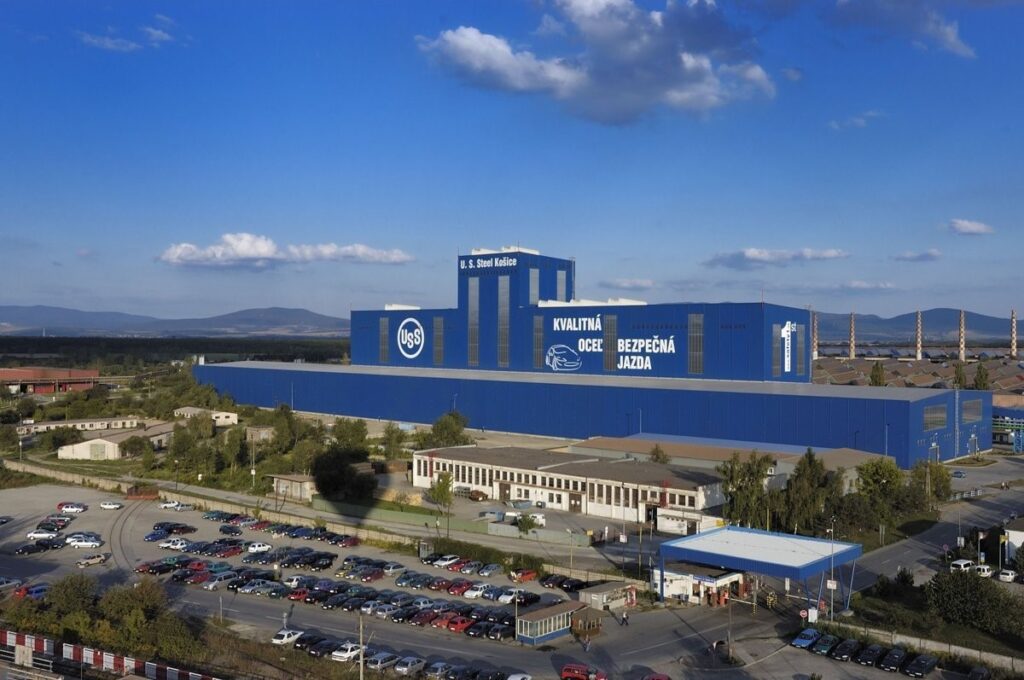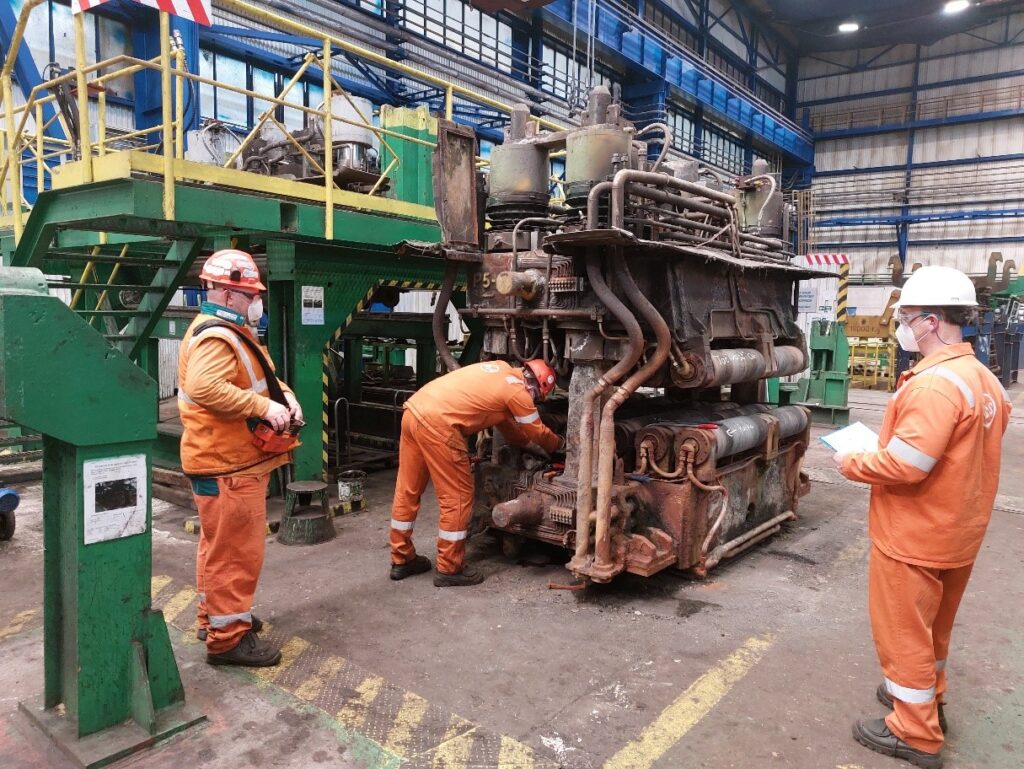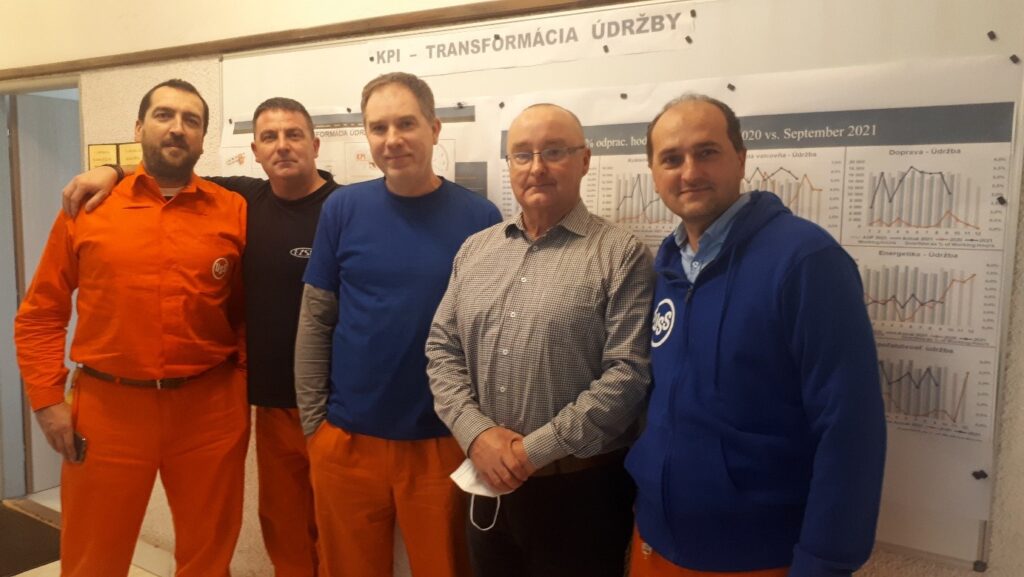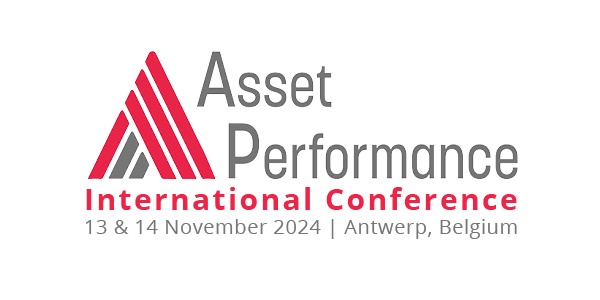People are the most valuable tool in wrench time measurements
A closer look at the successful maintenance transformation of US Steel in Košice (Slovakia)
US Steel Košice (USSKE), the Slovakian subsidiary of US Steel, is the largest integrated steel producer in Central Europe. Three years ago, USSKE started a transformation process to optimise maintenance. This resulted in a significant increase in labour productivity and a reduction in maintenance costs. Juraj Valent, the maintenance transformation manager, and Marko Rentka, the director of the maintenance transformation, explain how the change actually took place.
“Currently, there are about 9,000 employees in USSKE”, says Juraj Valent. “Regarding maintenance, USSKE uses a system of combined maintenance, where individual divisions have their own maintenance area and there is also the central maintenance: the central maintenance focuses on activities such as crane maintenance (we have cranes everywhere), climatic equipment maintenance, repairs of metallurgical units and electric motors. In addition, there is the department of logistical repairs that oversees the external repair services, in other words the contractors. When we have a major repair, we often use the services of contractors. They need to be managed so that we can use them at their best.”

Do you use a lot of contractors?
Juraj Valent: We are trying to reduce the number of contractors. It used to be more but we still need them for very specific jobs: it is important to have good contractors so that we do not have to specialise for each particular task, such as hydraulic systems.
What was the reason for the transformation project that started three years ago at USSKE?
Marko Rentka: The main objective was to strengthen our competitive position in Europe. This went hand in hand with the objective of increasing our productivity and work efficiency in three areas, namely production, support activities in administration and maintenance. To increase labour productivity and reduce costs, maintenance transformation was a priority for USSKE. The result was that three major changes were implemented: a transformation in the administration process (such as purchasing), operational changes (in the steel production) and – last but not least – maintenance transformation, with three waves in three years. The first stage was an improvement in planning and scheduling.
What were the recommendations to be implemented?
Juraj Valent: Our maintenance team divided the transformation of maintenance into phases or waves: in the beginning, the focus was on improving planning and scheduling in order to have good plans for a more efficient and safer approach to work. This was related to an increase in labour productivity. Then the focus shifted to improving the reliability of the equipment (RCM or reliability centred maintenance), which was also intended to reduce costs and minimise downtime. At this point, it is important to mention that we are trying to implement more preventive maintenance instead of corrective (the goal is a ratio of 70% compared to 30%, where we come from 50/50). And the last wave was the introduction of autonomous maintenance and the integration of operators into the facilities’ maintenance process.

One team with the same goal
One of the main objectives was to increase the workers’ efficiency. How did you start this process?
Marko Rentka: The best tool to increase labour productivity was the implementation of wrench time measurements. Wrench time is the percentage of total time worked in the maintenance crew that is spent on added value activities, which in this context means tools-in-hand and the direct application of maintenance to the equipment. This approach was also linked to a culture change, to a change in the thinking of our people. Our team first established a methodology for performing wrench time measurements. Originally, our wrench time varied between 30 and 35%, which was too low. The method and rules for measuring and observing were determined and divided into the following basic groups: wrench time, unproductive time and lost time. Then individual types of losses were assigned to each of the groups with an accurate description so that we could correctly evaluate and categorise the measurements according to the type of loss. The output was the identification of a specific area: the loss for which it was necessary to take corrective action in order to improve the situation. An important element was definitely the fact that we adequately trained and coached our individual employees.
The transformation process is still going on?
Juraj Valent: We are now in the final wave, the phase of autonomous maintenance. We also want to involve the operators. We start with some simple maintenance actions for them, so that they also know what to do if they notice that something is wrong. They will be able to immediately put a request into the system and then the maintenance people will come and fix it. But we are also pushing the operators into maintenance processing. Before, it was only done by our maintenance inspectors. Now we want to give the simple maintenance tasks (cleaning, greasing, simple repairs…) to the operators. The most important thing about this autonomous maintenance is not only that we can see the problems or failures in advance, but also that the operators can take care of it: they can notice that there is something wrong with our equipment and if they repair it themselves, they can still produce and have work. So the operators take care of the equipment. They no longer have to say: maintenance should do it.
The complete organisation is involved?
Juraj Valent: Yes, it is good that we have strong management commitment and support. In the past, operators and maintenance had discussions, but now it’s like we are one team with the same goal. It is a great collaboration between operators and maintenance. Two years ago, in the first wave, we put several people in a new position: Operator Maintenance Coordination or OMC. That was really useful. These people were originally operators, but they grew to a 50/50 maintenance/operators profile. All work requests for repairs go through them and they set priorities and decide whether something needs to be repaired or not. The cooperation between operations and maintenance has increased rapidly. We saw the results very quickly: after 3 or 4 months, equipment reliability and downtime had improved.
Marko Rentka: The OMC coordinates maintenance activities on a daily basis. He is the person who tells the other workers what is important for the operation and what can wait. He also checks what budget is available for curative maintenance. So it is a very important position in the maintenance planning system.
Same eyes
What were the biggest challenges in the transformation process?
Juraj Valent: I think the system was understood very quickly and correctly. The challenge was only to assess individual activities according to the classification into different categories such as productive time or lost time … In other words, our formers (who measure WT) had to look with „the same eyes“ to be able to apply the correct criterion for judging what is a loss and what is an unproductive time. In that context, our team had training sessions where specific examples were shown and also the Change agents of transformation, who coached the formers how to perform WT measurements, directly participated in the measurements within the training sessions.
Marko Rentka: It was also important to make the local management and maintenance people feel ownership and leadership within this project. Because without them it is not possible to change anything.
How did the maintenance people in the field perceive the project? Were there any objections and how did you deal with them?
Juraj Valent: Like everywhere, when there is a change, there is resistance in the beginning. It helped a lot that the whole process, meaning and purpose of the WT measurements were explained directly to all maintenance staff. The aim was not to control and punish people, but to identify where most problems were and then eliminate them. Change agents played a major role in this process, as did management on the work floor, who followed the model and were supported by senior management.
However, a major change did not occur until individual employees saw that we were not just talking about the losses and what needed to be changed, but that something was actually being done about it and individual corrective actions were being taken.
What were the enlightening insights of the first wrench time analysis?
Juraj Valent: It is important to communicate the process correctly, to explain its meaning and purpose, and to establish clear rules based on well-defined KPIs. Last but not least, it must be demonstrated that the corrective actions are indeed addressed and implemented. We therefore held a large meeting with all employees, not only with line and division management, but also with all people from operations and maintenance. It was clearly explained how we would measure the success of this wrench time measurement.
Mobile app
What were the main activities to be addressed in order to increase wrench time?
Juraj Valent: In the beginning, training on WT measurements took place and individual rules and KPIs were established for determining the measurements (i.e. how often and when to measure the WT and how long to measure it). With the help of the IT department, information support was created for monitoring individual measurements, together with an addressable reporting system. To speed up and simplify the entry of measurements, we also created a mobile application so that individual WT measurements could be recorded directly on mobile phones, thus eliminating the need for paperwork. This way, we know what the most critical area is.
Similarly, during the weekly meetings of a given operation, the most critical loss areas of individual measurements are discussed and evaluated, as well as the measures taken to eliminate them. The corrective measures are presented directly by the individual formers who performed the measurements. What is also important is that we created a rulebook for this transformation, with the most important rules and procedures and also with some examples. And we created the KPIs: when you are at work (as a former or a line manager), you know which wrench time measurement you need to do. We reduced maintenance costs, the number of contractors and downtime. So the process has a huge impact that has saved a lot of money and increased labour productivity.
How did you manage to increase wrench time?
Marko Rentka: If we want to manage a process, it is also necessary to measure and evaluate it. We already mentioned things like setting rules and reporting with the participation of IT support, but the most important factor in the gradual increase of WT was the gradual adoption of measures and their implementation. This caused a change in people’s thinking, which gradually started to focus on the measures and address individual loss areas.
IT support has also helped us a lot in the analysis of individual measurements, when it comes to determining the most loss-making areas. This has ensured that the main focus was on the areas that are the most problematic within the framework of the given areas and divisions and even within the framework of the entire USSKE, so that measures that have a nationwide character can be applied to other operations and plants.
Juraj Valent: Unambiguously from the beginning, the area of planning, work preparation and mutual communication was absolutely indispensable. Our company USSKE suffered great losses due to waiting for the equipment to be repaired (lock-out), with maintenance groups waiting until the equipment was insured, so that they could get to work safely. The same applies to the harmonisation and coordination of individual activities such as provision of cranes, diagnostic measurements, transportation, cleaning, transfer of workers for repairs, etc. All these activities could be said to have been adapted very quickly.
Later, the following measures to improve the unproductive time were applied. First, providing the necessary materials and spare parts for repairs, so that gearboxes and engines could be replaced more quickly. Secondly, new repair procedures were introduced, focusing on safety but also streamlining the work. And thirdly, work groups were equipped with new tools. These were mixed groups with electricians and mechanics, so that we did not have to wait for one of them.

Right people in the right place
What were the main results and benefits of the project?
Marko Rentka: The main benefits are the improvement of labour efficiency and productivity, the improvement of the WT from 30-35% to about 50-52%, the reduction of maintenance costs, but later also the integration of individual employees into maintenance repair processes. This is also due to the increase in equipment reliability and the reduction in downtime (both planned and unplanned).
What do the employees at USSKE think about the project and the project results today?
Juraj Valent: I think most of them already agree with this idea and recognise that gradually eliminating problems and especially solving them will only help them to do their job both more safely and more efficiently. What is good is that in today’s world, employees are increasingly taking corrective action to improve effectiveness. There has also been a culture change.
However, there are still groups who think that maintenance is there to monitor and control them. Corrective action should come from the people on the floor, not from management. The first year was really difficult to persuade, but by coaching the people, it worked. It is, however, a never ending story.
What would you recommend to other organisations if they start a WT project?
Marko Rentka: Just start, but allow enough time in the preparation phase so that people understand the purpose and meaning of measuring WT and realize that it will ultimately help them to perform maintenance activities more safely and efficiently. Of course, there must also be management support, especially in troubleshooting and in implementing the proposed corrective actions resulting from WT measurements. And make sure you have the right people in the right place, as is the case with our maintenance team.
People are generally the most important and valuable, and the same applies to WT measurements. People need to understand what you expect of them. They need to know what the rules are. But in the end you have to walk the talk by showing the results.

